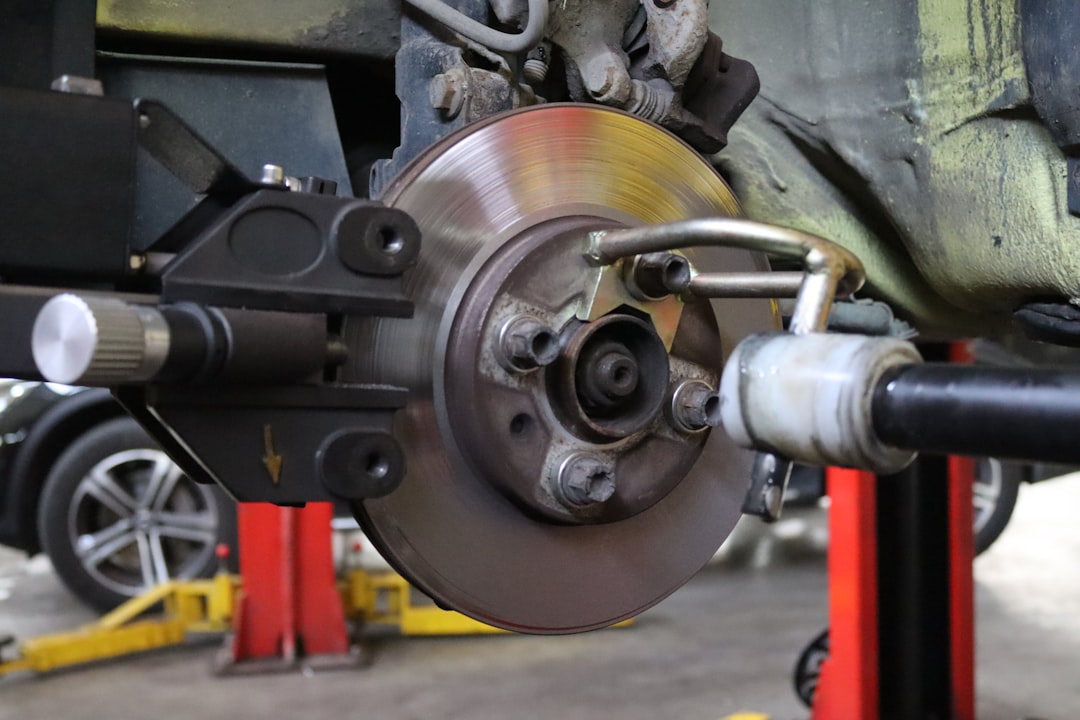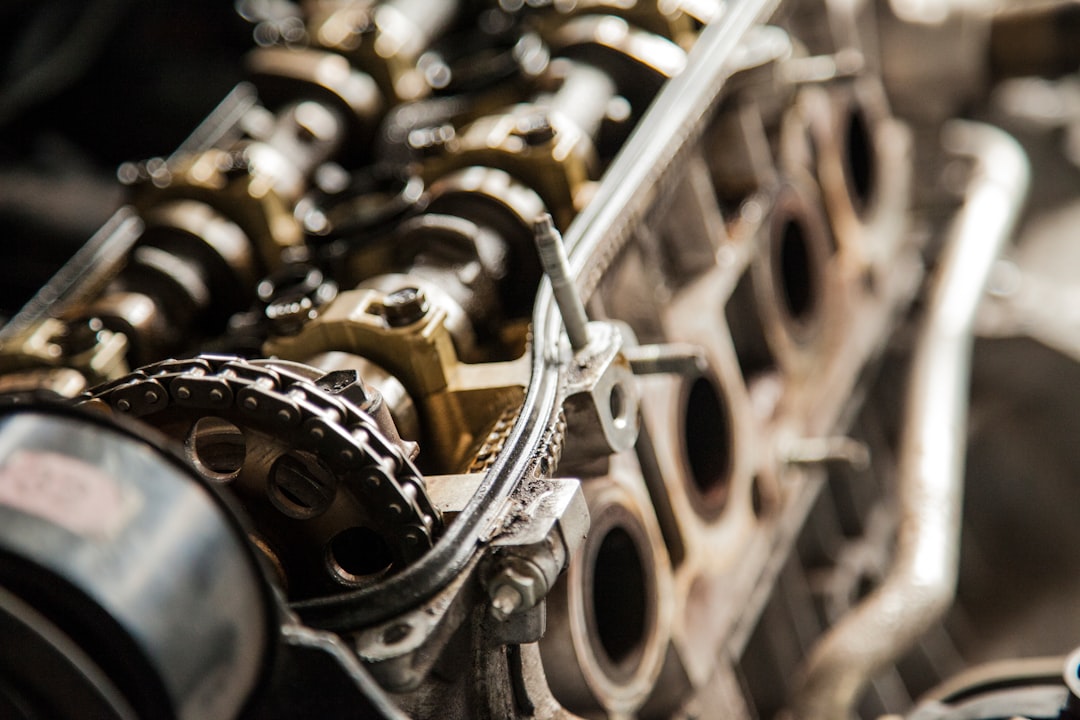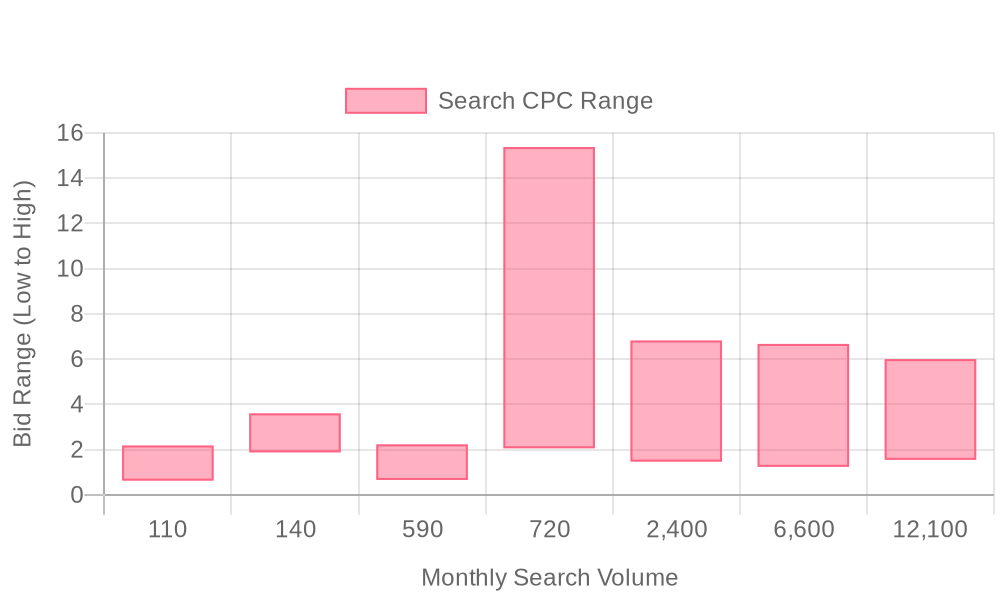
Supercharge your lead generation with a FREE Google Ads audit - no strings attached! See how you can generate more and higher quality leads
Get My Free Google Ads AuditFree consultation

No commitment
Supercharge your lead generation with a FREE LinkedIn Ads audit - no strings attached! See how you can generate more and higher quality leads
Get My Free Google Ads AuditFree consultation

No commitment
Supercharge your lead generation with a FREE Meta Ads audit - no strings attached! See how you can generate more and higher quality leads
Get My Free Google Ads AuditGet My Free LinkedIn Ads AuditGet My Free Meta Ads AuditFree consultation

No commitment
Supercharge your lead generation with a FREE Google Ads audit - no strings attached! See how you can generate more and higher quality leads
Get My Free Google Ads AuditFree consultation

No commitment
In today's complex marketing landscape, effectively promoting rebuilt auto parts requires a strategic mix of online channels working in concert. Google Ads plays a critical role by capturing high-intent prospects at the exact moment they're searching for solutions, effectively bridging the gap between broader awareness efforts and your sales process.
Modern B2B revenue teams in the rebuilt auto parts sector face intense competition and evolving buyer journeys. Leveraging Google Ads delivers a scalable, intent-driven way to intercept high-value prospects precisely when they’re searching for solutions. For a deeper look into industry-specific challenges and winning strategies, review this discussion on Google Ads for automotive manufacturing.
A data-driven approach to Google Ads for rebuilt auto parts unlocks measurable growth by connecting real-time buyer intent with targeted offers. Unifying ad performance data with CRM and sales activity enables teams to prioritize outreach and personalize engagement, resulting in higher conversion rates and improved ROI. For more tactical insights, explore our central marketing blog.
This playbook offers a comprehensive framework for integrating Google Ads into your marketing strategy for rebuilt auto parts:
Addressing the challenge of late lead information capture by incorporating intent-based audience segments ensures timely outreach, reducing the risk of competitors engaging first and maximizing your ad campaign effectiveness. By operationalizing these strategies, B2B teams in the rebuilt auto parts space can accelerate pipeline velocity, enhance marketing efficiency, and drive sustainable revenue growth. Ready to see how this works for your team? Get started for free with Sona.

The rebuilt auto parts industry operates within a complex digital landscape where both the audience and their needs are highly specialized. Google Ads delivers a direct line to buyers, connecting sellers with high-intent prospects who are actively searching for particular components at the moment of purchase consideration.
Targeted advertising through Google Ads enables businesses to maximize higher-margin opportunities by focusing on searches that signal urgent or high-value demand. This channel allows rebuilt auto parts suppliers to respond rapidly to market shifts, capturing incremental sales during peak periods and reducing lag between demand spikes and campaign activation.
For niche markets within rebuilt auto parts, Google Ads offers the ability to precisely segment audiences. This ensures marketing messages reach buyers interested in specific part categories, years, or models, expanding reach and minimizing wasted spend. Additionally, integrated data analysis tools close the loop between ad engagement, CRM records, and offline sales, informing broader marketing strategies with actionable insights and supporting unified reporting across revenue teams.
By leveraging synchronized platforms, sales and marketing teams can act on real intent signals from Google Ads, eliminating the challenge of disconnected marketing efforts. This approach creates a cohesive strategy where every touchpoint is measurable, every lead is attributed, and every campaign is optimized for growth in the rebuilt auto parts sector. To accelerate your results, get started for free with Sona.

Online advertising for auto parts demands a nuanced approach to reach buyers at every stage of the decision cycle. Selecting the right Google Ads campaign format helps rebuilt auto parts businesses maximize visibility, capture high-intent leads, and drive revenue. To further sharpen your strategy, explore expert insights in this discussion on Google Ads for automotive manufacturing, which highlights unique industry challenges and solutions.
Segmenting campaigns by firmographics—such as business size, fleet manager vs. repair shop, or geographic market—ensures messaging resonates with each audience. Tailored creative and offers for each segment lead to higher engagement and ROI, avoiding the pitfalls of generic, one-size-fits-all advertising. For an actionable walkthrough on optimizing your auto parts advertising, get started for free with Sona to unlock granular targeting and real-time campaign insights.

Growth in the rebuilt auto parts industry depends on pinpointing channels and tactics that reach buyers at every stage of the journey. High-performing teams use a data-driven approach to find new demand, optimize spend, and maximize return on each campaign. For a deeper dive into campaign performance strategies, explore our marketing insights blog, or get started for free with Sona to unlock actionable analytics for your campaigns.
Evaluating predictive models for lead readiness enables smarter allocation of ad spend. By scoring leads with behavioral and firmographic data, revenue teams can shift bidding strategies to focus on accounts with the highest propensity to purchase, reducing wasted spend and accelerating pipeline velocity. This unified approach to campaign targeting and optimization is integral for sustained growth in digital marketing for auto parts.

Effective audience segmentation is the foundation of impactful online advertising for auto parts. By grouping prospects according to their distinct needs and behaviors, marketers can deliver messaging that resonates and drives measurable results. This approach is particularly critical in the rebuilt auto parts sector, where purchase motivators and buyer journeys vary significantly between customer types. For step-by-step tactics tailored to the auto parts industry, explore this guide to running search ads for auto parts on Google and Bing.
Segmenting your targeting to align with the customer journey unlocks higher engagement and optimized ad spend. High-performing Google Ads strategies for rebuilt auto parts hinge on data-driven segmentation, which ensures that every dollar invested is focused on high-potential audiences. Marketers who leverage rich data sources are able to pinpoint not just who is visiting, but also what signals they exhibit—enabling smarter, more agile campaign adjustments.
Real-time data platforms can elevate this process by providing visitor-level intent signals. With unified data, marketers can detect when a prospect shifts from research to purchase mode and automatically adjust bid strategies, ad sequencing, or even product recommendations to match their readiness to buy.
Disconnected intent signals are a common pitfall in automotive PPC campaigns. When your data is unified, sales and marketing teams can synchronize messaging across channels, ensuring that every touchpoint—whether it’s a Google Ad, a follow-up email, or a sales call—reinforces the same narrative. This cohesion directly improves conversion rates and maximizes the ROI of digital marketing for auto parts.
For those leveraging advanced platforms, dynamic audience updates and CRM-ad sync capabilities streamline the segmentation process. Audiences adjust in real time as leads progress through the funnel, ensuring that only the most relevant prospects receive your highest-value offers. This reduces waste, sharpens your Google Ads targeting for auto parts, and positions your brand as a responsive, data-driven market leader. You can get started for free with Sona to see how real-time audience segmentation can drive your auto parts campaigns.

| Industry | Keyword | Monthly Search Volume | Competition Level | Low Bid | High Bid |
| Rebuilt Auto Parts | napa remanufactured engines | 110 | HIGH | 0.63 | 2.18 |
| Rebuilt Auto Parts | rebuilt automatic transmissions | 140 | MEDIUM | 1.88 | 3.6 |
| Rebuilt Auto Parts | rebuilt auto parts | 590 | MEDIUM | 0.66 | 2.23 |
| Rebuilt Auto Parts | ac compressor rebuild | 720 | MEDIUM | 2.06 | 15.37 |
| Rebuilt Auto Parts | rebuilt transmission shops near me | 2400 | MEDIUM | 1.47 | 6.82 |
| Rebuilt Auto Parts | starter rebuild near me | 6600 | LOW | 1.24 | 6.67 |
| Rebuilt Auto Parts | transmission rebuilding near me | 12100 | MEDIUM | 1.55 | 6 |
An effective keyword strategy is essential for dominating the rebuilt auto parts market through Google Ads. By focusing on search intent and granular segmentation, businesses gain a competitive edge while minimizing wasted spend. For further tactics, explore our actionable marketing guides.
By grouping keywords based on product type, buyer intent, and vehicle compatibility, advertisers can personalize messaging and landing pages to match diverse customer journeys. This approach, supported by dynamic audience updates and advanced conversion tracking integrations, empowers B2B teams to focus resources on the most valuable opportunities in the rebuilt auto parts sector. For more on optimizing these tactics, review our auto parts SEO methodology.
Optimizing Google Ads for rebuilt auto parts demands a disciplined, data-driven approach. By focusing on granular targeting and robust audience segmentation, marketers can intercept high-intent buyers while maintaining cost efficiency. For a deeper dive into the challenges and strategies unique to this industry, explore this discussion on Google Ads for automotive manufacturing, which highlights practical insights from other marketers. If you want to unify and leverage your marketing data for even sharper targeting and measurement, see how Sona can transform your approach.
Each step in this framework addresses a core element of modern automotive PPC campaigns, ensuring every dollar invested drives measurable impact and sustainable demand generation. For marketers seeking additional strategies and expert perspectives, our marketing insights blog offers actionable guidance for every stage of campaign execution.
These strategic executions ensure that campaigns remain adaptable, responsive, and aligned with the real-time needs of automotive buyers and B2B procurement teams. Marketers who unify their go-to-market data and personalize every touchpoint consistently outperform competitors relying on siloed, manual processes. If you're ready to streamline your entire automotive PPC workflow, get started for free with Sona and experience the difference of integrated marketing intelligence.

Rebuilt auto parts businesses gain a competitive edge by actively expanding their digital presence through strategic online advertising and data-driven content creation. Leveraging digital marketing for auto parts ensures brands stay top-of-mind with both B2B buyers and retail customers searching for cost-effective, high-quality alternatives.
By leveraging these practices, businesses can effectively expand their digital footprint and increase the visibility of their offerings within the rebuilt auto parts sector. Get started for free with Sona.
Effective execution of Google Ads for rebuilt auto parts relies on targeted keyword selection, granular audience segmentation, and creative assets tailored to buyer intent. Marketers looking for tactical campaign advice can benefit from this discussion on Google Ads for automotive manufacturing, which highlights industry-specific strategies and challenges. For more guidance on optimizing your campaigns, explore our collection of marketing playbooks.
Integrating Google Ads with broader marketing channels, including CRM systems and cross-channel strategies, ensures your messaging resonates consistently at each customer touchpoint. Syncing enriched audience segments and conversion data across platforms closes the gap between digital acquisition and offline sales, powering smarter budget decisions. If you want to see how this works in practice, get started for free with Sona.
Cutting-edge solutions streamline attribution, allowing auto parts marketers to track both online and offline conversions from initial impression to final purchase. By leveraging intent signals and advanced visitor identification, revenue teams can prioritize high-value accounts and activate dynamic audiences as leads progress through the funnel. This unified approach empowers rebuilt auto parts businesses to solve industry-specific challenges, boost lead quality, and achieve measurable ROI in a complex, competitive market.
In conclusion, optimizing Google Ads for rebuilt auto parts is not just a recommendation—it's an essential strategy for standing out in a competitive market. By focusing on niche-specific keywords, creating compelling ad copy, and using targeted audience segments, you can effectively reach the right customers and drive sales for your auto parts business.
Throughout this article, we've explored the unique challenges of advertising rebuilt auto parts and provided solutions to maximize your Google Ads performance. From selecting the right keywords to crafting ads that speak directly to your target audience, these strategies are designed to help you increase visibility and boost sales.
Imagine the transformation your business can achieve by implementing these strategies effectively. You have the tools and insights to elevate your advertising efforts and connect with customers in meaningful ways. It's time to take action and make these possibilities a reality.
To unlock even more powerful insights and streamline your advertising campaigns, start for free to experience our platform and its capabilities today.
Best practices include using a data-driven approach, targeting long-tail high-intent keywords, aligning ad messaging with audience intent, integrating ad performance data with CRM systems, and continuously optimizing performance by monitoring metrics such as cost-per-click and conversion rates.
Optimization strategies include targeting long-tail keywords with high intent, segmenting audiences based on behavior and engagement, aligning landing pages with specific audience intents, and implementing cross-channel integrations to synchronize audience lists and enhance engagement.
Target long-tail, high-intent search terms such as 'rebuilt alternator for Honda Accord' or 'remanufactured engine warranty' to reach buyers with specific needs.
Allocate budget based on performance data, prioritizing top-performing segments and adjusting spend dynamically as intent signals shift. Regularly analyze market share and competitor presence to ensure optimal budget allocation.
Measure success by tracking metrics such as conversion rates, cost-per-click, and lead quality. Use advanced tracking solutions to connect online ad interactions with offline transactions for a comprehensive view of ROI.
Join results-focused teams combining Sona Platform automation with advanced Google Ads strategies to scale lead generation

Connect your existing CRM

Free Account Enrichment

No setup fees
No commitment required

Free consultation

Get a custom Google Ads roadmap for your business
Join results-focused teams combining Sona Platform automation with advanced Meta Ads strategies to scale lead generation

Connect your existing CRM

Free Account Enrichment

No setup fees
No commitment required

Free consultation

Get a custom Google Ads roadmap for your business
Join results-focused teams combining Sona Platform automation with advanced LinkedIn Ads strategies to scale lead generation

Connect your existing CRM

Free Account Enrichment

No setup fees
No commitment required

Free consultation

Get a custom Google Ads roadmap for your business
Join results-focused teams using Sona Platform automation to activate unified sales and marketing data, maximize ROI on marketing investments, and drive measurable growth

Connect your existing CRM

Free Account Enrichment

No setup fees
No commitment required

Free consultation

Get a custom Google Ads roadmap for your business
Over 500+ auto detailing businesses trust our platform to grow their revenue
Join results-focused teams using Sona Platform automation to activate unified sales and marketing data, maximize ROI on marketing investments, and drive measurable growth

Connect your existing CRM

Free Account Enrichment

No setup fees
No commitment required

Free consultation

Get a custom Google Ads roadmap for your business
Over 500+ auto detailing businesses trust our platform to grow their revenue
Join results-focused teams using Sona Platform automation to activate unified sales and marketing data, maximize ROI on marketing investments, and drive measurable growth

Connect your existing CRM

Free Account Enrichment

No setup fees
No commitment required

Free consultation

Get a custom Google Ads roadmap for your business
Over 500+ auto detailing businesses trust our platform to grow their revenue
Our team of experts can implement your Google Ads campaigns, then show you how Sona helps you manage exceptional campaign performance and sales.
Schedule your FREE 15-minute strategy sessionOur team of experts can implement your Meta Ads campaigns, then show you how Sona helps you manage exceptional campaign performance and sales.
Schedule your FREE 15-minute strategy sessionOur team of experts can implement your LinkedIn Ads campaigns, then show you how Sona helps you manage exceptional campaign performance and sales.
Schedule your FREE 15-minute strategy sessionOur team of experts can help improve your demand generation strategy, and can show you how advanced attribution and data activation can help you realize more opportunities and improve sales performance.
Schedule your FREE 30-minute strategy sessionOur team of experts can help improve your demand generation strategy, and can show you how advanced attribution and data activation can help you realize more opportunities and improve sales performance.
Schedule your FREE 30-minute strategy sessionOur team of experts can help improve your demand generation strategy, and can show you how advanced attribution and data activation can help you realize more opportunities and improve sales performance.
Schedule your FREE 30-minute strategy sessionOur team of experts can help improve your demand generation strategy, and can show you how advanced attribution and data activation can help you realize more opportunities and improve sales performance.
Schedule your FREE 30-minute strategy session





Launch campaigns that generate qualified leads in 30 days or less.
